For years, I’ve wondered why Korean filmmakers—as talented and imaginative as they are—couldn’t/wouldn’t make an animated film based on its rich cultural history or mythology like the wonderful Coco or The Book of Life. There are literally hundreds, or even thousands of stories that you can tell, with some embellishments of course.
Kpop Demon Hunters… on Netflix. Not exactly the title and the subject matter I was waiting for but I immediately started hearing good things about it. My initial disinterest was replaced with curiosity in about a day’s time and I ended up watching the whole thing in one sitting—which almost never happens. While the movie was progressing, I couldn’t help but put on my blogger’s hat and start making mental notes on what’s real and what’s purely fictional so that I could write about it.
Before we get to it, though, two observations.
First, I liked it a lot, as a 56-year old ajussi (아저씨). It’s not at all what I had dreaded it would be (well… maybe a little but done in a tasteful way). Most of all, it’s fun. If you haven’t watched it, the movie is in English with a few Korean words and expressions sprinkled in here and there, so you won’t have to rely on subtitles.
Second, it’s in line with what I have been writing about in the past few weeks regarding the Korean concept of the dead world. Perhaps some premonition was at work with my subconscious that led me to it. See? It pays to read my blog—ha! (please tell others…)
With that, let me clarify some things for you about the film with as little spoilers as possible.
“The Demons”
It is understandable that everything that is associated with death is viewed as “demonic”, but this isn’t necessarily the case in the Korean view of the dead world. There are as many good and protective “ghosts” as there are mischievous (again, not necessarily evil) ones and all of them used to be living souls at one point in time.
Saja Boys
Here’s the plot summary that’s spelled out on IMDb (Internet Movie Database) website, CTRL-C & CTRL-V’ed.
When they aren't selling out stadiums, Kpop superstars Rumi, Mira and Zoey use their secret identities as badass demon hunters to protect their fans from an ever-present supernatural threat. Together, they must face their biggest enemy yet - an irresistible rival boy band of demons in disguise.
Ok, these are Saja Boys, “the irresistible boy band of demons in disguise.”
Saja = 사자 = (multiple meanings, but most frequently) lion
Throughout the film you will see the lion logo whenever the Saja Boys are on stage, but readers of this Substack will instantly recognize that the name has a hidden meaning. As in Jeoseung Saja (저승사자)—the Messenger or Executioner from the Dead World. Unlike how they’re portrayed in the animation, Jeoseung Saja by their very nature aren’t demonic—they’re simply delivering messages and executing orders from the book of fate and even act in your best interest after death.
As a side note, Korean fans of the movie have been asserting that the main Saja Boy character Jinu was modeled after Cha Eun-woo (차은우), a former Kpop idol and now an actor.
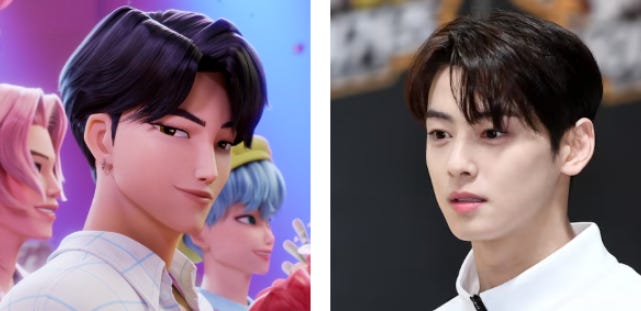
Hon-moon
The movie revolves around something called Hon-moon (혼문) which is shown to be an invisible force field that will protect people from the attackers of the death world. This element of the movie is a fabrication. No such thing in the Korean folklore.
Lineage of Girl Groups
I thought what the creators/writers did at the beginning of the film setting up the background information for the plot was brilliant.
The premise of the movie is that the dark forces of the dead world have long been fought by the music of songstresses. This might seem ridiculous, but it is historically accurate that moodang (무당, Korean shaman practitioners) performed their shamanic activities/ceremonies, often accompanied by loud percussive music and dances, to dispel evil forces and/or connect with the netherworld for at least a thousand years.
The very first Korean pop music girl group debuted in 1939 during the Japanese occupation era. One of the members, Yi Nan-young (이난영), eventually went solo and had a number of hits that are still sung after all these years. Yi’s two daughters and her niece formed a girl group known as the Kim Sisters and had a successful career in US (but not known in Korea)! They made 22 appearances in the Ed Sullivan Show during the 1950s and 60s. The Kpop girl group’s lineage is indeed very long. (You will better understand why I’m bringing this up when you watch the animation.)
The Magpie and the Tiger
There is a genre of Korean art called min-hwa (민화). Literally translated as “People’s Paintings,” these are usually paintings that depict popular folk traditions and satirical motives that have no known artists. A magpie and a tiger often appear together in the same theme in what’s called a Jakhodo (작호도, “Painting of a magpie and a tiger”). As you can see, the image of the tiger is made to look like a bumbling buffoon while the magpie is looking down on it.
There’re a few interpretations of the symbolism, but the most accepted one is that the magpie represents the common folk keeping an eye over the foolish tiger which is supposed to be the Joseon dynasty royalty and the power-mongering aristocrats.

Apparently, the National Museum of Korea’s merchandise website and offline store were both bombarded with orders for…
… this Magpie and Tiger badge which sold out as quickly as the movie gained popularity. The website says new inventory is due to arrive on July 11, and there’s a hard limit of 3 pieces per customer.
The Naksan Wall
Towards the middle of the movie, there is this scene where Jinu of Saja Boys is standing against a stone wall overlooking the city of Seoul.
Different angle, but there really is this 600-year old city wall near downtown of Seoul called Naksan Stone Wall (낙산성곽). It is a remnant of the stone wall that stood around the original boundary of Hanyang (Seoul) more than 600 years ago.

Namsan Tower
Towards the end of the movie, people are invited to a concert in a stadium near Namsan Tower. There is no stadium there, but the tower has been the defining landmark of Seoul for decades.
This is what Namsan tower (officially called “N Seoul Tower” but everyone calls it the Namsan tower) looks like this in a real photo.
Il-wol O-Bong-Do (일월오봉도)
During one of the concerts, the stage background is adorned with a painting called Il-wol O-bong-do.
Il (일, 日) = Sun
Wol (월, 月) = Moon
O (오, 五) = Five
Bong (봉, 峰) = Mountain Peak
Do (도, 圖) = Painting, Drawing
This is the actual painting that stood directly behind the King’s throne in the official Joseon Court for more than 600 years. The King = Sun, the Queen = Moon, five big mountains of the Korean peninsula, the water and the pine tree collectively symbolize the wish for peace, harmony, and longevity.
While I was working on this part of this post, something occurred to me and I started digging through old photos I had taken during my trips to Korea, and I found this. A picture I took exactly 10 years ago at Gyeongbokgung, the Royal Palace of Joseon.
Shamanism
Something that deals with a “demon hunter” would not be complete without some reference to Korean shamanism. Those two stone statues to the left of the screenshot are called Dol Harubang (돌하르방, a Jeju dialect word meaning “Stone Grandfather”) and they only exist in Jejudo. So, this shot is instantly recognizable as somewhere in Jeju.
It is not a coincidence that Jeju was nuanced in this regard because Jeju has tons of mystical traditions—probably more mysterious than the ones of the mainland Korea because there were practically no written records of them—almost all of them surviving through oral tradition and real-life practice, adding to the lore.
This is an actual picture of something called 서낭당 (Seo-nang-dang), a town totem of sorts, all designed to protect the village from evil spirits. You were to never cut down or harm these trees.
These will probably help you enjoy the movie a little more.





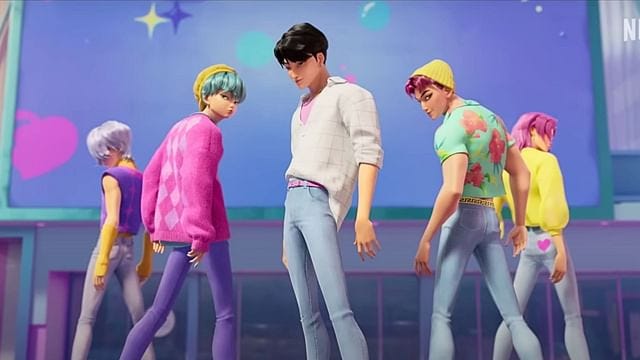



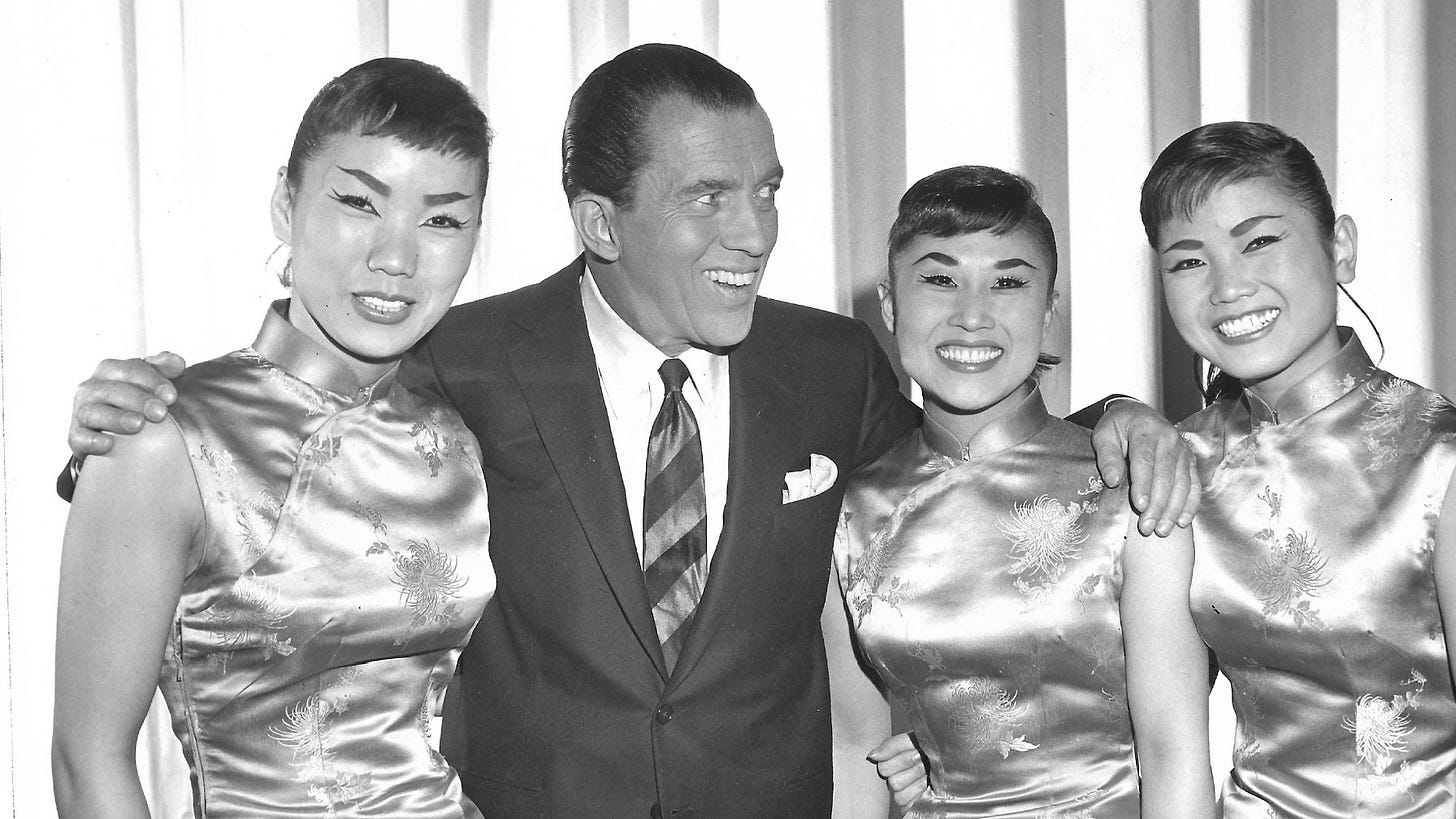
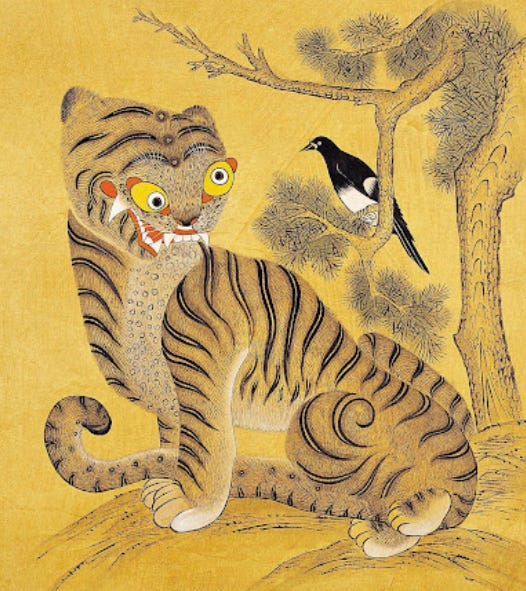










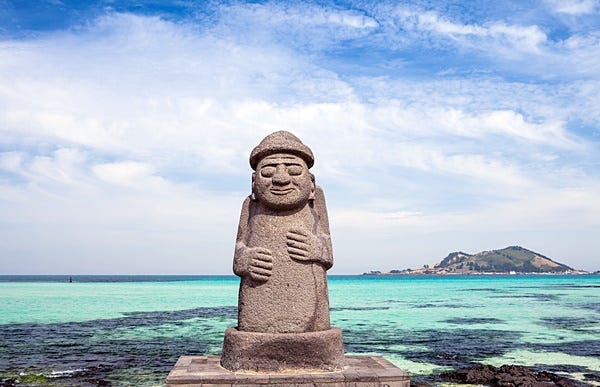

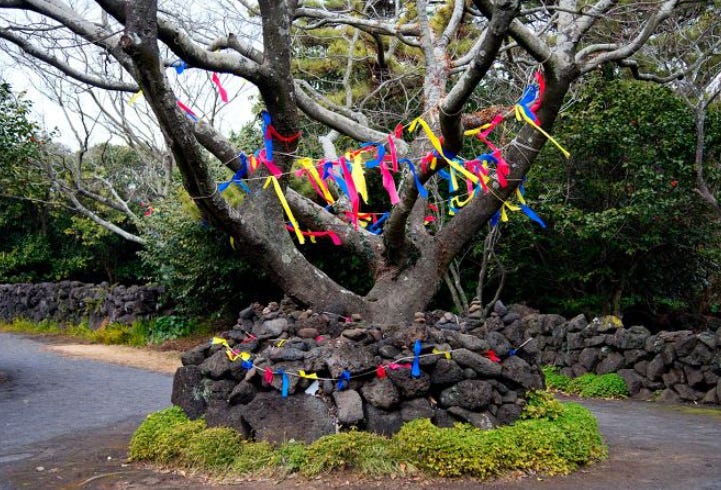
I'm glad you wrote about this... I, too, was hesitant to watch the movie based on its title. However, after reading a few positive reviews and hearing my children's obsession with the soundtrack, my interest was peaked. I thoroughly enjoyed the movie and was quite impressed with all the cultural nuggets sprinkled throughout. I even had a few lol moments. I'm glad you pointed out the Gyeongbokgung painting and its reference as a backdrop during a concert, I completely missed that. I'll have to watch it again with the kids.
Thank you for the wonderful cultural notes, here. My favorite K-Dramas are the historical (I know, huge surprise. Not.) and knowing the "origin stories" are a part of this production is the big selling point for me. :)